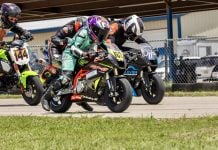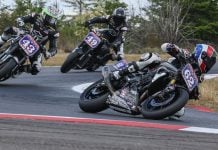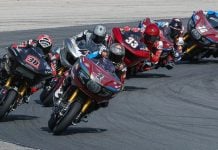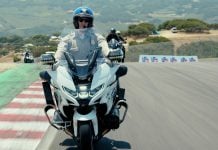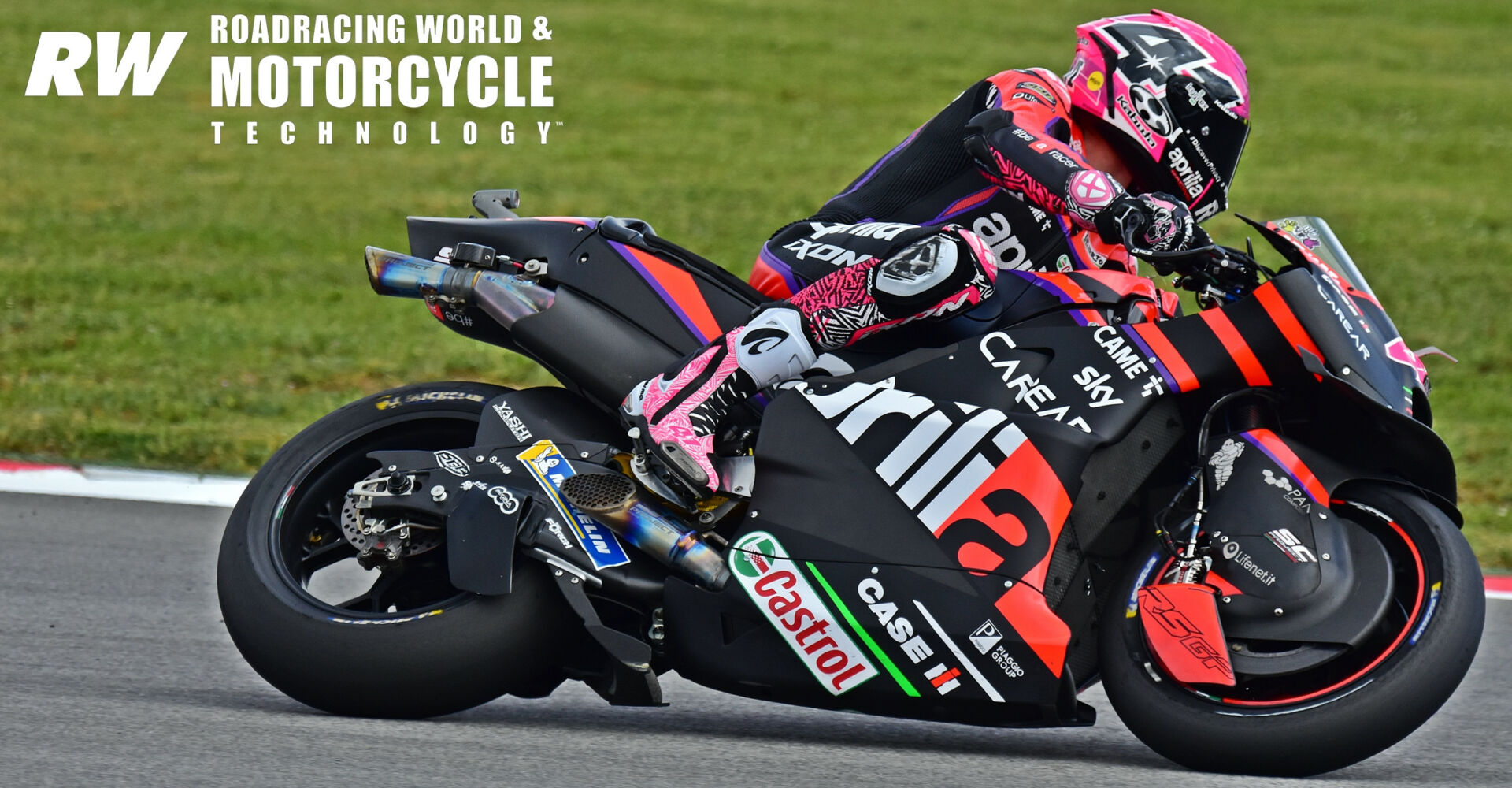By Michael Gougis
For six glorious laps, Aprilia not only led the Grand Prix of Catalunya, it locked out the podium. Riders on the RS-GP led every lap of the race, and for a chunk of it, Maverick Vinales, Aleix Espargaro, and Miguel Oliveira filled all the trophy spots. Espargaro won over Vinales, and while Oliveira faded to fifth at the end, behind him there were three riders who, between them, had 11 World Championships.
Remember, before the start of the 2021 season, Aprilia had tried to sign multiple riders to its MotoGP team, only to be told, in short, thanks but no thanks. Two years later, it’s one of the most desirable bikes on the grid.
I had a chance to talk to Romano Albesiano, Aprilia’s MotoGP Technical Director, in Portugal. We stood next to that iteration of the RS-GP, and he generously explained the bike’s aerodynamics to me. More than that, he said bluntly that aero was going to make the difference between winning and losing.
“Of course top speed is good for passing and to avoid getting passed,” Albesiano said. “But for improving the overall performance over the lap, this (aero) is the way to go.”
It’s not just about streamlining or wings anymore. Aprilia, to a greater extent than any other manufacturer, recognized that aero could be used to generate mid-corner downforce that loaded the tire directly, and chose to pursue that development path. By creating venturi tunnels in the fairing lowers that sucked the bike downward when it was leaned over, the engineers created more grip.
The faster the bike goes, the more downforce it creates. The longer and faster the curves, the more time such a bike gains; as every race coach I have ever had has told me, time is found in the fast turns, not the slow ones. The slicker the track, the bigger the gap between venturi-effect machines and bikes with more traditional aerodynamics. All of these factors were in evidence at the fast, curvy, low-grip Catalunya circuit last weekend, and there the RS-GP was untouchable.
Espargaro told me at Portugal that in the fast, fast right-handers that end the lap there, his bike was on rails. All that was needed, he said, was some additional fine-tuning, balancing the downforce against steering; downforce makes the machine harder to turn, so the chassis must be adapted deal with the new forces.
Aprilia’s engineers did some fine-tuning over the summer break and got it right. At the fast, flowing Silverstone circuit, Espargaro won the Grand Prix, Vinales was on the podium in the Sprint, and Aprilia took three of the top five places in the Grand Prix. Only an inspired ride by defending World Champion Francesco Bagnaia in the Sprint prevented Aprilia from going 1-2 in both races at Catalunya. And the way Bagnaia had to defend against Vinales in the short race, it was difficult to see him holding off Vinales for much longer. Bagnaia made it clear that he believed that Aprilia had the better machine.
Here’s the point: Barring massive rule changes, this is the future of road racing machines. Similar to the situation in F1 car racing, motorcycle road racing engineers can no longer ignore the simple fact that a well-designed fairing and ancillary aerodynamic components can create grip out of thin air. And grip = speed. That’s a formula every racer understands. Right now, Ducati can hold its own due to the sheer power of its desmodromic engine, stability under braking and the (probably under-appreciated) talent of Bagnaia. But Ducati already has started copying some of the Aprilia aero developments.
Aero isn’t a bolt-on solution. It’s a comprehensive way of looking at a modern MotoGP bike, a fundamental baseline from which to begin designing one, something that changes every aspect of riding one. (For example, Luca Marini pointed out after the Catalunya race that riders no longer try to “draft” another rider out of a corner if they can help it, because the “dirty” air from the leading bike reduces the effectiveness of the following bike’s front wings, which means more wheelie and less forward drive.)
No one seriously thinks Marc Marquez, Fabio Quartararo or Joan Mir–the above-mentioned MotoGP World Champions–have forgotten how to ride a racebike. But they are on machines designed with aero as an afterthought, a bolt-on. Honda and Yamaha are still messing around with front wings and exhaust systems. It’s like watching them race Moto2 bikes in a MotoGP race. Combined, so far this year Marquez, Quartararo, and Mir have 109 points. Espargaro has 154.
This revolution is over. Venturi-generated downforce is the future, and don’t be surprised when it increasingly shows up in the design of sportbikes for sale in a dealership near you.


